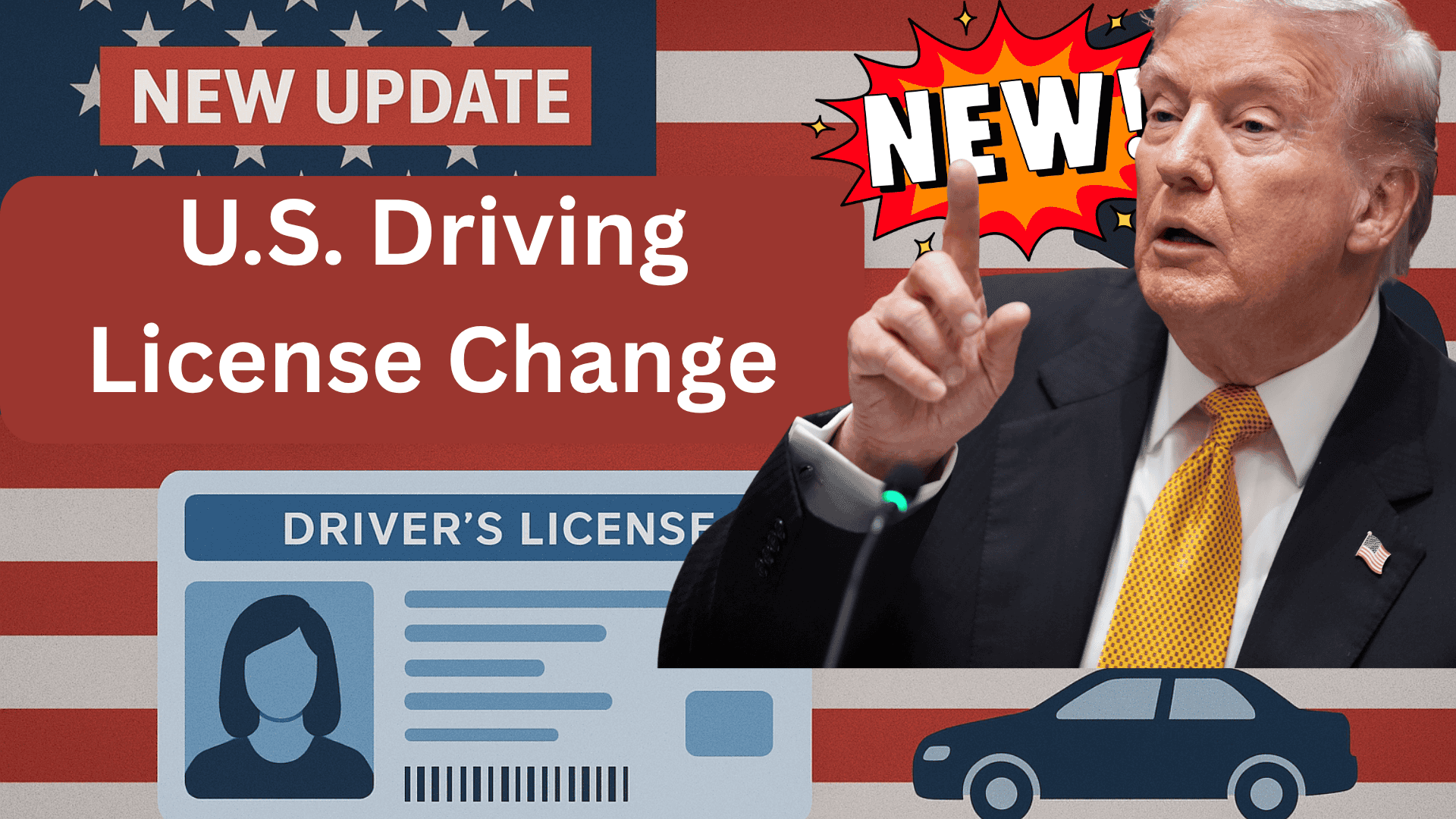Many U.S. drivers are preparing for important updates as new federal and state licensing regulations take effect this November. The recent U.S. Driving License Changes 2025 are aimed at improving road safety, security, and digital verification standards across the nation.
U.S. Driving License Changes 2025
Starting in November 2025, several key updates to U.S. driver’s license rules and formats are being rolled out. These include the nationwide implementation of the REAL ID Act compliance deadline, enhanced digital license availability, and stricter verification requirements for new and renewed licenses. These reforms mark a significant step toward modernizing identification systems while improving security and preventing fraud.
The new rules will affect millions of drivers renewing or applying for licenses, especially those planning to use their IDs for air travel or federal building access. The changes vary by state but align with national standards set by the Department of Homeland Security (DHS).
REAL ID Compliance and Deadline
One of the most notable changes taking effect is the final phase of the REAL ID enforcement. Beginning May 7, 2025, all U.S. residents must have a REAL ID-compliant driver’s license or identification card to board domestic flights or enter certain federal facilities. States have been issuing REAL ID-compliant cards for several years, but the final enforcement date is now confirmed.

Drivers who already possess a REAL ID (identified by a star in the upper right corner of the card) do not need to take further action. Those without it must visit their local Department of Motor Vehicles (DMV) to upgrade before the deadline.
Enhanced Identity Verification
Another major change includes enhanced identity and document verification during the licensing process. Applicants are now required to present more robust proof of identity, residency, and citizenship or lawful status.
Acceptable documents include:
- A valid U.S. passport or birth certificate
- Social Security card or W-2 form showing the full SSN
- Two proofs of residency, such as utility bills or lease agreements
This tighter verification aims to reduce identity theft, fraudulent licenses, and illegal document use across states.
Digital and Mobile Driver’s Licenses
Many states are now expanding access to digital driver’s licenses (DDL) that can be stored on smartphones. These digital IDs function as secure, scannable alternatives to physical cards and are already accepted in states like Arizona, Maryland, and Colorado.
The Transportation Security Administration (TSA) has begun approving digital licenses for airport security checkpoints at selected airports. However, drivers are still encouraged to carry a physical copy until full nationwide acceptance is confirmed.
License Design and Security Updates
In addition to digital adoption, physical licenses are receiving updated designs featuring advanced security elements such as holograms, barcodes, and microtext. These updates make it harder to forge or duplicate driver’s licenses and improve law enforcement’s ability to verify authenticity.
States are also integrating features that make licenses more compatible with digital verification systems used by airports, government offices, and private businesses.
Renewal Process and Online Access
To streamline services, most DMVs now allow online renewal and appointment scheduling to reduce in-person wait times. However, first-time REAL ID applicants must complete the verification process in person.
Drivers are advised to check their state DMV websites for updated renewal guidelines and document requirements before visiting offices. States such as California, Texas, and Florida have already introduced simplified online portals for license renewal and replacement.
What Drivers Should Do Now
With the new rules taking effect in November 2025, here’s what all U.S. drivers should do:
- Check if your current license is REAL ID compliant. Look for the star symbol on your card.
- Gather documents early. Ensure your identification and residency proofs are updated and accessible.
- Schedule a DMV appointment in advance. Many states expect higher appointment demand in the coming months.
- Explore digital license options. If available in your state, consider setting up a verified mobile ID.
- Stay informed through official DMV updates. Avoid third-party sites that charge fees for information or scheduling.
Looking Ahead
These new driving license rules represent a shift toward greater security and convenience in personal identification. The nationwide adoption of REAL ID and digital licenses ensures more reliable verification, reduces identity fraud, and aligns the U.S. with modern identification standards.
As the November 2025 rules roll out, drivers are encouraged to act early to avoid delays and ensure compliance before the federal deadline.
The updated driving license regulations reflect a major step toward safer, more efficient, and digitally integrated transportation systems across the country.
Thank you for reading and staying informed about the latest national policy updates.





